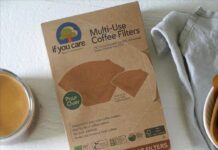Looking to enjoy a delicious cup of coffee without any lactose? Look no further! In this article, we will be exploring the world of non-dairy milk options, such as soy, almond, and oat, that are perfect for those who are lactose intolerant or simply prefer a dairy-free alternative. Get ready to savor your morning brew without any discomfort or compromise on taste. Let’s discover the wonders of non-dairy milk and how it can elevate your coffee experience to new heights!
Overview of Non-Dairy Milk
Definition and Purpose
Non-dairy milk refers to plant-based alternatives that are used as substitutes for traditional dairy milk. These milk alternatives are made by extracting liquids from various plants and grains, providing individuals with a lactose-free option that still offers similar textures and flavors to regular milk. They serve as an excellent solution for those who are lactose intolerant, following a vegan diet or simply looking for a healthier alternative.
Popularity and Growth
Over the past decade, non-dairy milk has experienced a surge in popularity, with people becoming more health-conscious and environmentally aware. This growing demand has fueled the availability and diversity of options in the market. It’s no longer limited to a few choices; there is now a wide range of non-dairy milk varieties, each with its own unique taste and nutritional profile.
Varieties and Ingredients
Non-dairy milk can be made from various plant sources, including soy, almond, oat, coconut, rice, hemp, and cashew. Each variety offers its own distinct flavor and texture, making it easier for individuals to find one that aligns with their preferences. The ingredients used in these milks can include the primary plant source, water, natural sweeteners, and emulsifiers to enhance consistency and stability.
Benefits of Non-Dairy Milk
Lactose Intolerance Solution
One of the most significant benefits of non-dairy milk is its suitability for individuals with lactose intolerance. Lactose, a sugar found in dairy milk, can cause digestive discomfort for those who lack the enzyme lactase needed to break it down. Non-dairy milk provides a lactose-free alternative, allowing individuals to enjoy their coffee without the uncomfortable side effects.
Vegan and Plant-Based Option
For those following a vegan or plant-based lifestyle, non-dairy milk offers an ideal alternative to dairy milk. By using plant-based milk, individuals can still enjoy the creamy texture and taste in their coffee without supporting the consumption of animal products. Non-dairy milk also provides a lower carbon footprint, making it a sustainable choice for the environmentally conscious.
Nutritional Content
Non-dairy milk options often include essential nutrients, such as calcium, vitamin D, and protein. While the nutrient content varies depending on the specific variety and brand, many non-dairy milks are fortified to provide a similar nutritional profile to that of dairy milk. This ensures that individuals can still obtain the necessary nutrients while enjoying their favorite lactose-free coffee.
Soy Milk for Lactose-Free Coffee
Origin and Production
Soy milk, derived from soybeans, has been consumed in Asia for centuries and has gained popularity worldwide. The production process involves soaking, grinding, and boiling soybeans to extract the milk-like liquid. The resulting liquid is then strained to remove any solid particles, resulting in a smooth and creamy non-dairy milk.
Taste and Texture
Soy milk has a slightly nutty and mild flavor that complements coffee well. It offers a smooth and creamy texture, making it an excellent substitute for dairy milk in coffee-based beverages. The consistency of soy milk can withstand high temperatures, making it suitable for hot coffee preparations.
Nutritional Profile
Soy milk is known for its high protein content, making it a popular choice among individuals looking to increase their protein intake. It is also a good source of essential minerals such as calcium, iron, and potassium. Moreover, soy milk contains omega-3 and omega-6 fatty acids, which are beneficial for cardiovascular health.
Pros and Cons
Some advantages of using soy milk in coffee include its versatility, as it blends well with various coffee flavors, and its ability to froth easily. However, individuals with soy allergies should avoid consuming soy milk. Additionally, some people may not enjoy the distinct taste and smell of soy in their coffee.
Almond Milk for Lactose-Free Coffee
Origin and Production
Almond milk, made from ground almonds and water, is another popular non-dairy milk option. Originating from the Middle East, almond milk production involves blending soaked almonds with water and then straining the mixture to separate the liquid. The result is a creamy and flavorful milk alternative.
Taste and Texture
Almond milk has a smooth and slightly sweet taste, with a hint of nuttiness that pairs well with coffee. Its texture is thinner compared to soy milk but still offers a pleasant creaminess. Almond milk’s subtle flavor allows the coffee’s characteristics to shine through, making it a favorite among coffee enthusiasts.
Nutritional Profile
Almond milk is low in calories and fat, making it a suitable option for those watching their weight. It is also a good source of vitamin E, an antioxidant that helps protect cells from damage. However, almond milk is lower in protein compared to dairy milk and other non-dairy milk varieties, which is something to consider when using it in coffee preparations.
Pros and Cons
One advantage of almond milk is its naturally low calorie and fat content, making it an ideal choice for those following a calorie-restricted diet. It also blends well with coffee’s flavor profile and is popular among individuals who prefer a mild and nutty taste. However, almond milk may not froth as easily as other varieties, and individuals with nut allergies should avoid consuming it.
Oat Milk for Lactose-Free Coffee
Origin and Production
Oat milk, made from soaked and blended oats, has recently gained popularity as a non-dairy milk alternative. Originating from Sweden, oat milk production involves soaking oats in water, blending them, and then straining the mixture to obtain a creamy liquid. Oat milk’s mild and slightly sweet flavor has made it a favorite among coffee enthusiasts.
Taste and Texture
Oat milk has a creamy and velvety texture that adds richness to coffee without overpowering its flavor. It has a mild and naturally sweet taste, making it an excellent choice for those who prefer a slightly sweeter profile in their coffee. Oat milk’s smooth consistency and ability to blend well with coffee make it a popular choice for various coffee preparations.
Nutritional Profile
Oat milk is a nutritious option, as it contains essential nutrients such as fiber, vitamin E, and B vitamins. It is also naturally low in fat and cholesterol-free. Oat milk is often fortified to provide additional nutrients like calcium and vitamin D, ensuring a well-rounded option for those seeking a lactose-free coffee experience.
Pros and Cons
Oat milk’s creamy texture and slightly sweet taste make it a versatile choice for coffee lovers. It is also easier to froth compared to other non-dairy milks, allowing for latte art creations. However, individuals with gluten allergies should opt for certified gluten-free oat milk, as oats can be cross-contaminated with gluten during processing.
Choosing the Right Non-Dairy Milk for Your Coffee
Flavor Preferences
When selecting a non-dairy milk for coffee, considering personal flavor preferences is essential. Each variety offers its own unique taste that may complement or enhance the coffee’s flavor profile. Experimenting with different options can help individuals find the perfect balance that suits their palate.
Consistency and Frothing
The thickness and frothability of non-dairy milk can vary. Some varieties, such as soy and oat milk, have a creamier consistency and froth well, making them suitable for creating latte art. Thinner varieties like almond milk may not froth as easily but can still provide a pleasant texture.
Allergies and Sensitivities
Individuals with specific allergies or sensitivities must choose a non-dairy milk that suits their dietary needs. For example, individuals with soy or nut allergies should opt for alternatives like oat milk or coconut milk. Reading ingredient labels and looking for certified allergy-free options can help ensure a safe and enjoyable coffee experience.
Availability and Pricing
Consider the availability and pricing of non-dairy milk options in your area. Some varieties may be more readily available or more affordable than others. Exploring different brands and comparing prices can help individuals find a non-dairy milk that fits their budget and is easily accessible.
Using Non-Dairy Milk in Coffee Preparations
Hot Coffee
Non-dairy milk can be added to hot coffee in the same way as dairy milk. Start by heating the non-dairy milk in a saucepan or microwave until warm, then pour it into the coffee. Stir gently to incorporate the milk and adjust the amount to achieve the desired creaminess.
Iced Coffee
For iced coffee, non-dairy milk can be added directly to the chilled coffee. Alternatively, it can be blended with ice cubes and coffee to create a refreshing and creamy iced coffee beverage. Experimenting with different ratios can help individuals find their preferred consistency and taste.
Espresso-Based Drinks
Non-dairy milks can be used in espresso-based drinks, such as lattes and cappuccinos, as a substitute for dairy milk. They can be steamed and frothed using an espresso machine or warmed separately and poured over the espresso. The frothing ability of each variety may vary, so individuals should choose a milk that suits their desired texture and presentation.
Latte Art
Creating latte art with non-dairy milk requires experimenting with different varieties and techniques. Some non-dairy milks, like soy and oat milk, have better frothing capabilities, making them ideal for intricate latte art designs. Others may require specific frothing methods or tools to achieve desired results.
Cultural and Regional Preferences
Asia
Soy milk has long been popular in Asian countries, where it is commonly consumed as a beverage or used in various culinary preparations. In countries like China and Japan, soy milk is a common addition to coffee and tea. Oat milk is also gaining popularity in Asian cafes as a non-dairy option for coffee lovers.
Europe
Europe has embraced a wide range of non-dairy milk options, including soy, almond, oat, and coconut milk. Each variety has carved its place in European coffee culture, with almond milk being a popular choice in countries like Spain and Italy. Oat milk has also seen significant growth in popularity, particularly in Scandinavian countries.
North America
Non-dairy milk has experienced tremendous growth in North America, with soy and almond milk being the most widely available options. The variety of non-dairy milks available in coffee shops and grocery stores caters to different tastes and dietary preferences.
Other Regions
Non-dairy milk consumption is not limited to the above regions but has become a global phenomenon. The popularity and availability of certain non-dairy milk options may vary depending on local culinary traditions, dietary practices, and market trends.
Tips for Frothing Non-Dairy Milk
Temperature and Technique
To achieve the best results when frothing non-dairy milk, it is essential to heat it to the right temperature. Most non-dairy milks froth best at around 140°F (60°C). Experimenting with different techniques, such as swirling the milk in a circular motion, can help create a smooth and velvety microfoam.
Special Tools and Appliances
Investing in a milk frother, steam wand, or handheld frother can significantly improve the frothing process for non-dairy milk. These tools are designed to create the perfect consistency, giving coffee lovers the opportunity to experience the same frothy texture found with traditional dairy milk.
Common Mistakes to Avoid
When frothing non-dairy milk, avoid overheating it, as this can affect the taste and texture. It’s also important to choose high-quality non-dairy milk products to ensure optimal frothing results. Additionally, different non-dairy milks may require slight adjustments to temperature and frothing techniques, so experimentation is key to finding the perfect method for each variety.
Exploring Other Non-Dairy Milks
Coconut Milk
Coconut milk offers a rich and tropical flavor that pairs well with certain coffee profiles. It has a creamy consistency and can be used in both hot and iced coffee preparations. Coconut milk is particularly popular in Southeast Asia and is commonly found in traditional coffee beverages like Thai iced coffee.
Rice Milk
Rice milk, made from milled rice and water, has a naturally sweet taste with a thin and watery consistency. It is a suitable option for those with soy, nut, or lactose allergies, as it is free from common allergens. However, rice milk may not provide the same frothing capabilities or nutritional value as other non-dairy milk options.
Hemp Milk
Hemp milk, made from hemp seeds and water, offers a nutty flavor and a thin consistency. It is rich in omega fatty acids and provides a good source of protein. Hemp milk’s unique flavor may not appeal to everyone, but for those who enjoy a slightly earthy taste, it can be a delightful addition to coffee.
Cashew Milk
Cashew milk, made from ground cashews and water, is another non-dairy milk alternative worth exploring. It has a creamy texture and a mild flavor that complements coffee nicely. Cashew milk is often fortified with nutrients like calcium and vitamin D, offering additional health benefits alongside a lactose-free coffee experience.
By expanding your horizons and exploring these and other non-dairy milk varieties, you can discover new flavors, textures, and nutritional benefits to enhance your lactose-free coffee journey.




































